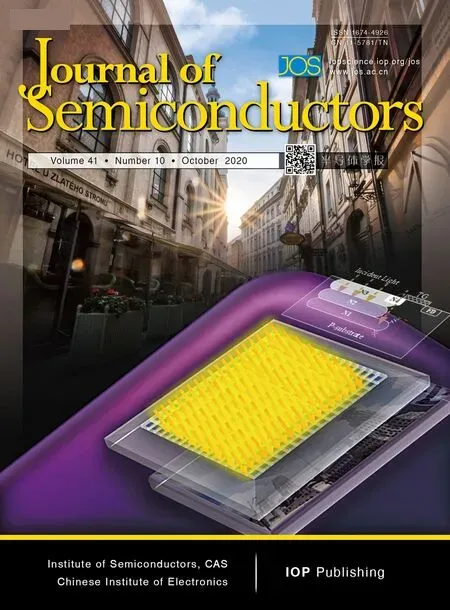Comparative study of various methods for extraction of multiquantum wells Schottky diode parameters
2020-10-22ElyesGaroudjaWalidFilaliSlimaneOussalahNoureddineSengougaandMohamedHenini
Elyes Garoudja , Walid Filali Slimane Oussalah, Noureddine Sengouga, and Mohamed Henini
1Plateforme Technologique de Microfabrication, Centre de Développement des Technologies Avancées, cité 20 août 1956, Baba Hassen,Algiers, Algeria
2Microelectronics and Nanotechnology Division, Centre de Développement des Technologies Avancées, cité 20 août 1956, Baba Hassen,Algiers, Algeria
3Laboratory of Metallic and Semiconducting Materials, Université de Biskra, B.P 455, 07000 Biskra RP, Algeria
4School of Physics and Astronomy, Nottingham Nanotechnology and Nanoscience Center, University of Nottingham, Nottingham,NG7 2RD, UK
Abstract: In this work, forward current voltage characteristics for multi-quantum wells Al0.33Ga0.67As Schottky diode were measured at temperature ranges from 100 to 300 K. The main parameters of this Schottky diode, such as the ideality factor, barrier height, series resistance and saturation current, have been extracted using both analytical and heuristics methods. Differential evolution (DE), particle swarm optimization (PSO) and artificial bee colony (ABC) have been chosen as candidate heuristics algorithms, while Cheung technic was selected as analytical extraction method. The obtained results show clearly the high performance of DE algorithms in terms of parameters accuracy, convergence speed and robustness.
Key words: barrier height; heuristic methods; multi-quantum wells; parameters extraction; Schottky diode
1. Introduction
The Schottky diode is a microelectronic component based on semiconductor materials. The metallization of this device can give an Ohmic or Schottky contact, according to work function of the used metal. Electrical characterizations of Schottky diode are considered as an important stage before the device final fabrication. Among this electrical characterization, the current voltage (I–V) characteristics are used. Indeed, the extraction of Schottky barrier diodes parameters like ideality factorn, barrier heightфb, series resistanceRsand saturation currentIs, has attracted the attention of many researchers[1−6].
In the literature, the parameters extraction is investigated by using analytical and heuristics technics. The analytical approaches such as Cheung, Werner, and Nord[1,7,8]are only useful in narrow regimes. This limitation put consequently the researchers to develop other techniques and methods of extraction. Heuristics algorithms mimic biological behavior to resolve mathematical optimization problem.This is the reason why many researchers use these algorithms to solve parameters extraction issue. The main advantage of this kind of extraction methods is the global convergence for all the desired search space[9,10].
Among the proposed works in the literature, the modified ABC algorithm (MABC), vertical optimization, genetic algorithm (GA) and simulated annealing (SA) have been used to extract the SBD parameters[5,11]. However, these works do not give a detailed comparative study with analytical methods and they have been tested at small search spaces.
In this paper, the main contribution is the elaboration of comparative study for different methods of extraction, tested at large range of temperature (from very low temperature 100 K to room temperature 300 K). More precisely, four technics have been developed such as Cheung[1], PSO, ABC and DE to deal with this concern. Concerning the used heuristic technics, the PSO algorithm originally mimics the social behavior and the movement of organisms, such as a flock of birds or a school of fish. Meanwhile, the ABC algorithm simulates the foraging behavior of bees in nature. While the last algorithm, which is DE is a population-based algorithm developed to solve real optimization problems. This algorithm requires four main steps, such as initialization, mutation, recombination, and selection. For more details about these algorithms, see Refs. [5, 11, 12].
2. Problem statement
2.1. Mathematical model of a Schottky barrier diode
The mathematical model of a Schottky barrier diode(SBD), which is described by its forward bias current, is given by the following expression[13−15]:

In Eq. (1),Isis the saturation current. The following formula is used to compute its value[15]:
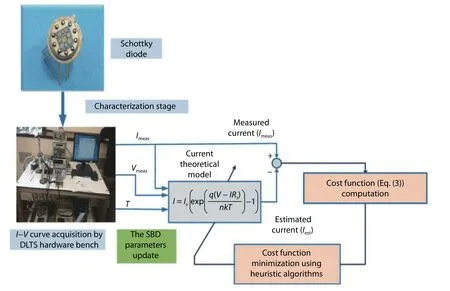
Fig. 1. (Color online) The Schottky diode parameters extraction strategy.

In these equations,IandVare the diode current and bias voltage, respectively.KandA* denote Boltzmann and Richardson constants, respectively;qis the electronic charge;Adefines the Schottky contact area;Tis the operating temperature.ndenotes the diode ideality factor,Rsis the series resistance; andфbis the Schottky barrier height.
2.2. Parameters extraction strategy
The accuracy of the SBD model (given by Eq. (1)) depends on the accurate value of its parameters (more preciselyn,Rsandфb). For this purpose, an efficient strategy of SBD parameters extraction has been proposed in this work.
Here, the SBD parameters extraction is considered as an optimization problem, in which the cost criterion to be optimized (in this paper minimized) is the root mean square error(RMSE) between real experimental and estimated Schottky diode currents, as follows:

where

In Eqs. (3) and (4),ηis a vector that includes the model parameters, and it is given by:

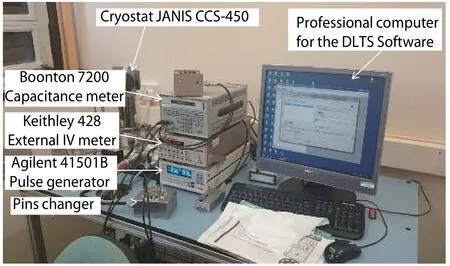
Fig. 2. (Color online) The DLTS characterization bench at Nottingham University.
Ldenotes the size of the experimental (I–V) data;VmeasandImeasare the measured data gotten from the recordedI–Vcharacteristics.
In this paper, the SBD parameters are accurately extracted by using three different heuristics algorithms and an analytical method. Indeed, the heuristic algorithms will change the value of each parameter, in each cycle and within preselected range, until we obtain the lowest cost function (RMSE).Fig. 1 summarizes the main steps of Schottky diode parameters extraction.
3. Experiments
In this work, a multi-quantum wells (MQWs) GaAs/Al0.33-Ga0.67As Schottky diode, which was fabricated at Nottingham University (School of Physics and Astronomy Applied)[16,17],has been utilized to test the effectiveness of the developed methods.
The electrical characterization of this diode has been accomplished in the DLTS characterization room of Nottingham University. This room includes the characterization equipment needed to test and characterize electronic components at low/high frequencies and temperatures.
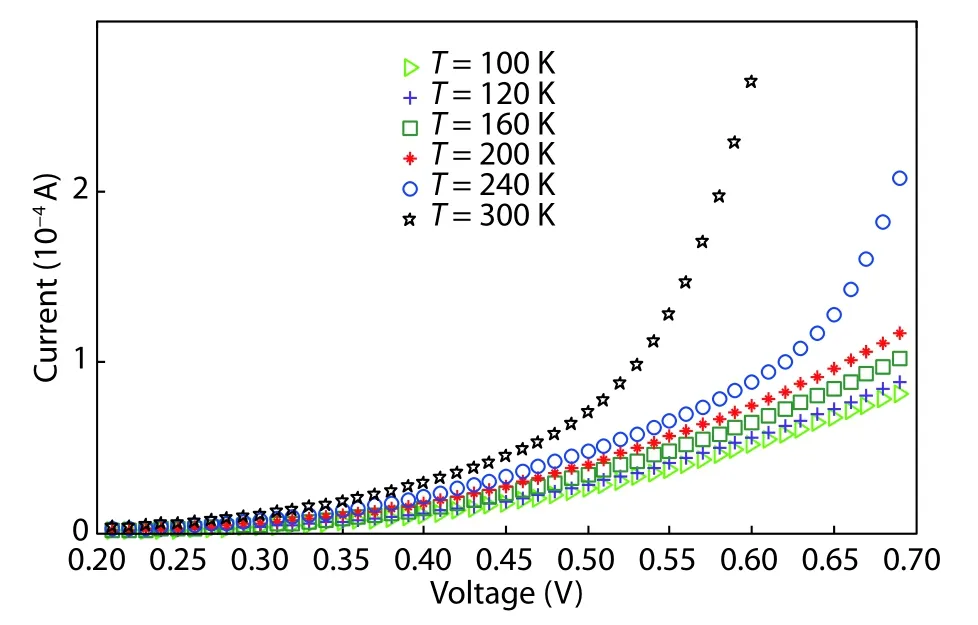
Fig. 3. (Color online) The I–V characteristics of n-type Al0.33Ga0.67As Schottky diode for different temperatures.

Table 1. The setting parameters of DE, PSO and ABC algorithms.

Table 2. The variation range of SBD parameters.
The experimentalI–Vdata of this Schottky diode have been collected and measured by using Agilent 41501B pulse generator and Keithly 428 externalI–Vmeter. The DLTS bench also includes a computer for the DLTS software. The different components of DLTS bench are shown in Fig. 2.

Table 3. The obtained results for the temperature range (100–160 K).
The experimental (I–V) data have been measured for different temperatures with a sampling rate of 10 ms.
4. Results and discussions
Fig. 3 shows the experimental forwardI–Vcharacteristics of the GaAs/Al0.33Ga0.67As Schottky diode. These characteristics were measured at voltage range (0.2–0.7 V) and for low temperature starting from 100 to 300 K. This choice was taken to observe the mechanism of conduction of our sample (Schottky diode) under low temperature conditions(–173 °C).
It can be seen from Fig. 3 that by rising temperature, the current value is also increased. This indicates a usual thermal activation phenomenon[13,16,18]. The obtained experimental(I–V) characteristics were used to extract the main Schottky diode parameters (n,Rs,Is,фb). The extraction was done by using different algorithms such as DE, PSO and ABC algorithms,additionally with an analytical method[1].
Finally, a comparative study was achieved to evaluate the accuracy of those methods. The setting parameters of those algorithms are given in Table 1. The variation range of the SBD parameters is given in Table 2.
In this simulation, each algorithm was executed 30 times to compute the Mean and STD metrics. Table 3 and Table 4 summarize the obtained parameters for the different competitor methods. These results are the key elements for the comparative study.
From the results of Table 3 and Table 4, the main observation is the large difference of the RMSE values between the heuristics algorithms and the analytical method. So, the analytical method is not a good candidate to solve this problem.Fig. 4 and Fig. 5 show the weakness of Cheung method to extract the SBD parameters against DE algorithm, at 100 and 300 K, respectively.
Our analysis of the results of the algorithms shows that all of these methods are adequate solutions for this problematic. Moreover, the DE algorithm gives accurate parameters (n,Rs,Is,фb) along the entire temperature range, compared with the others. This accuracy is due to the ability of the DE to converge to the lowest RMSE.
Additionally, the robustness of DE algorithm is verified by comparing the STD metric for the three heuristic algorithms. Indeed, STD values of DE are in scale of 10–22, while are in 10–7and 10–8for the others.
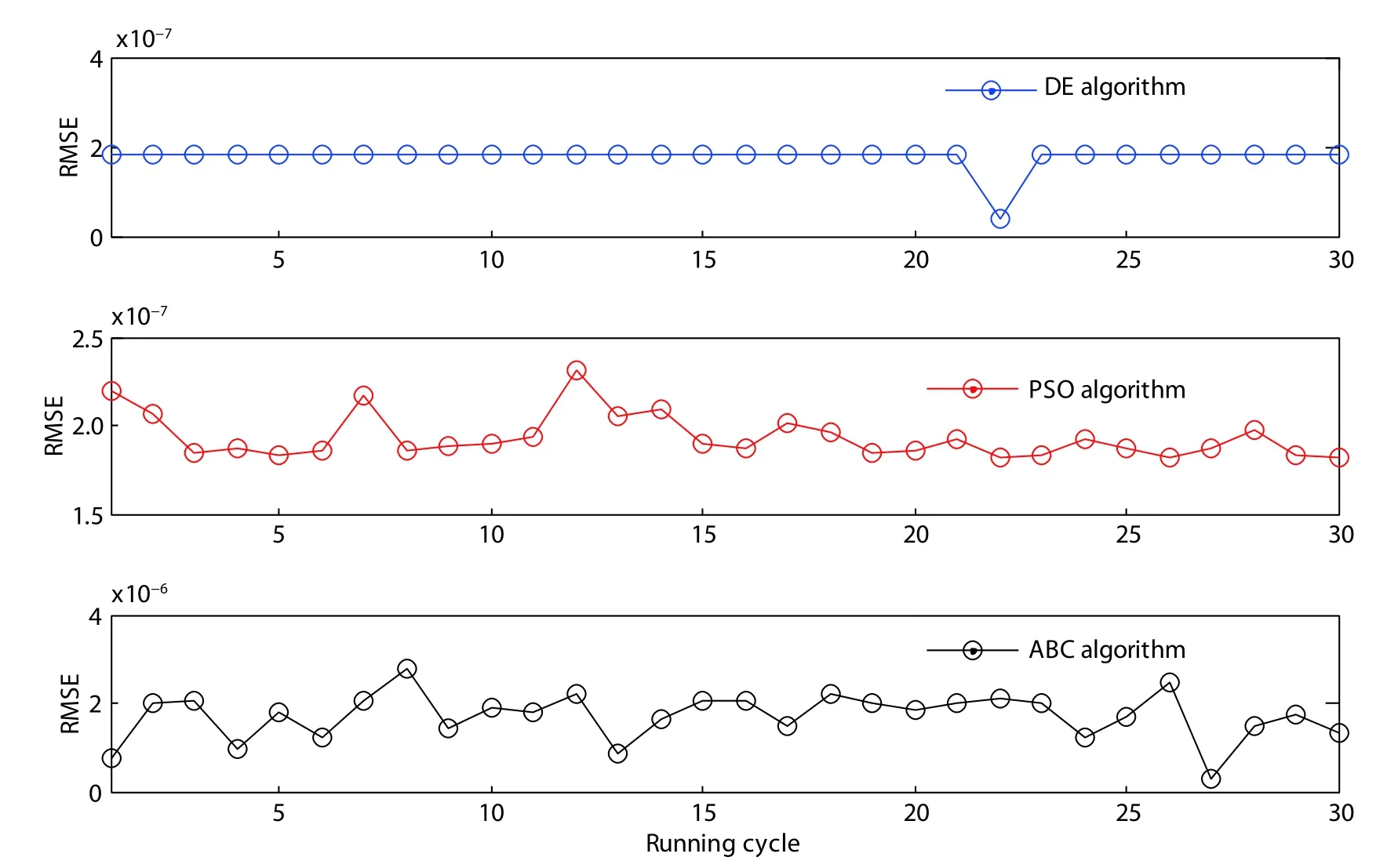
Fig. 7. (Color online) Variation of RMSE at each running cycle for DE, PSO and ABC algorithm for T = 100 K.
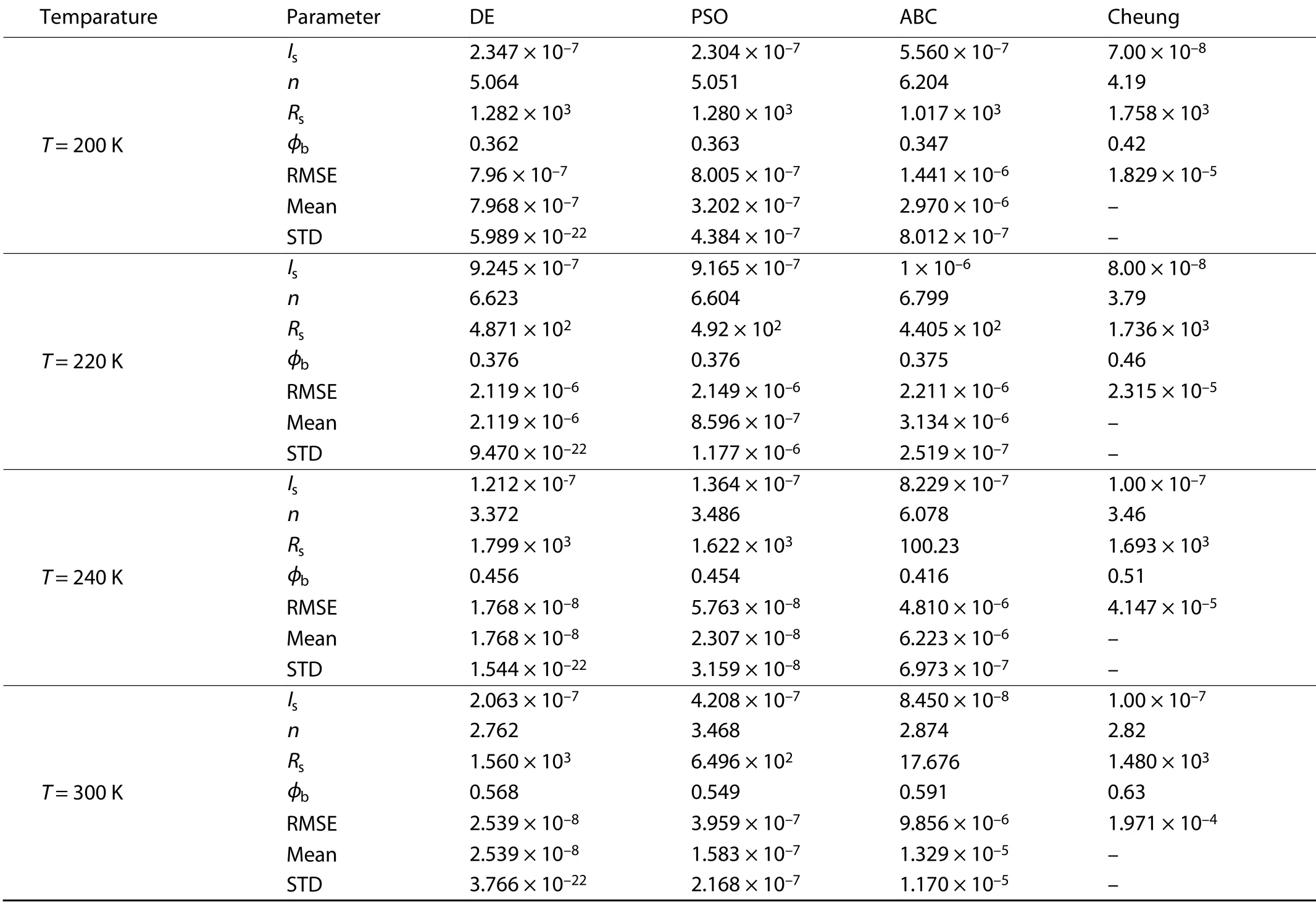
Table 4. The obtained results for the temperature range (200–300 K).
Fig. 6 shows the convergence rate of DE, PSO and ABC algorithms atT= 100 K. This figure indicates that ABC algorithm presents a rapid convergence till cycle #800. Up to this cycle, ABC algorithm shows slow convergence. The optimal solution was achieved at iteration #4700. In contrast to ABC algorithm, the others show an apparent rapid convergence speed. Where, it significantly increases in case of DE algorithm compared with PSO and ABC.
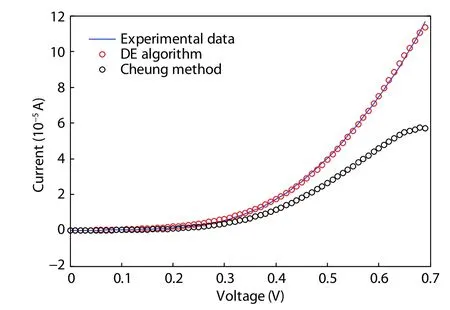
Fig. 4. (Color online) Experimental and simulated I–V characteristics from 0 to 0.7 V at 100 K.
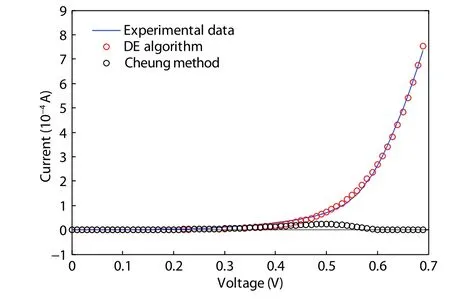
Fig. 5. (Color online) Experimental and simulated I–V characteristics from 0 to 0.7 V at 300 K.
The variation of RMSE at each running cycle for DE, PSO and ABC algorithm for T = 100 K is shown in Fig. 7. By analyzing the results in this figure, we can see that by increasing the number of running cycle (30) for the different algorithms,the DE algorithm shows the best robustness. In fact, its RMSE value does not change at almost all running cycles compared with PSO and ABC. Consequently, the SBD parameters do not change.
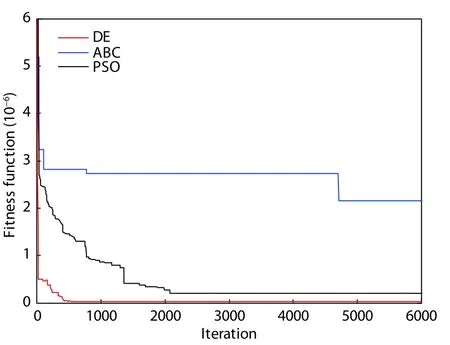
Fig. 6. (Color online) Convergence characteristics of DE, PSO and ABC algorithms for T = 100 K.
5. Conclusion
In this paper, a comparative study was elaborated for different extraction methods. This comparison is divided on two sections; first, the performance of heuristics algorithms was compared with those of analytical method (Cheung method);and second, the efficiency of DE, PSO and ABC algorithms was investigated.
The obtained results show that the performance metrics,convergence rate speed and the accuracy of the parameters determined by the DE algorithm are better than ABC, PSO and Cheung method. In addition, DE is more robust than the other algorithms. As a result, DE is an effective, robust and fast approach for the parameter extraction of the Schottky diode.
杂志排行
Journal of Semiconductors的其它文章
- I nvestigation of current collapse and recovery time due to deep level defect traps in β-Ga2O3 HEMT
- 4H-SiC trench MOSFET with an integrated Schottky barrier diode and L-shaped P+ shielding region
- S uppression of oxygen and carbon impurity deposition in the thermal system of Czochralski monocrystalline silicon
- Defect levels in d-electron containing systems: Comparative study of CdTe using LDA and LDA + U
- A 0.5–3.0 GHz SP4T RF switch with improved body self-biasing technique in 130-nm SOI CMOS
- Wireless communication and wireless power transfer system for implantable medical device
